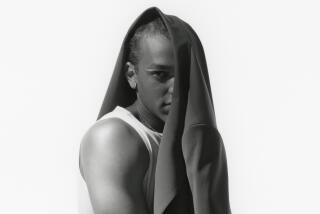HERE COME THE BRIDES : How to Have a Beautiful Wedding Without Spending a Lot of Money
- Share via
Though levels of formality and size of weddings vary widely, one across-the-board concern among traditional and trendy brides is cost.
Nationwide, brides spend $750 to $850 on a wedding gown, according to Beverly Clark, author of “Planning a Wedding to Remember.” Locally, brides are looking for an even better bargain.
“Everyone is very price-conscious these days, but brides are more likely to serve chicken instead of steak or a less expensive wine than they are to scrimp too much on the dress,” says Susan Lane, who has dropped prices at her Toluca Lake boutique up to 50% in recent years. Lane’s gowns run $300 to $400 on the average, though some cost as much as $2,000.
“There is (price) resistance, even among the upper echelons,” says bridal designer Vera Wang, whose made-to-order gowns available only in her New York City store start at $6,000. The designer recently introduced a new line of ready-to-wear dresses priced $1,800 to $3,000.
New York designer Carolina Herrera agrees that the dress is usually a priority. Her bridal collection, priced from $2,500 to $7,000, is available at I. Magnin Bullocks Wilshire. Herrera likes off-the-shoulder styles, “just sexy enough to be allowed in churches,” she says.
Tulle, the net fabric often used in veils, is the most important fabric this season, according to Herrera. She likes the airy, ethereal look of cloud-like tulle for her long and tea-length dresses.
Usually traditional in her design approach, Herrera offers short gowns for modern brides. “You have to provide options to some girls who have never worn a longer gown in their lives,” she says, “They have to feel comfortable.”
Brides are also moving away from fussy gowns, a trend that Wang and Herrera embrace. Wang’s brides, she says, prefer a minimum of adornment: “What they want are clean architectural shapes in extraordinary fabrics with great workmanship.” Wang’s luxe fabrics include organza, faille, Jacquard, taffeta, Shantung and pique.
“My clients are more interested in fashion than in the traditional styles their mother wore--they aren’t typical of the bridal market,” she says. Wang prefers lace appliques to bows and other traditional details.
She also believes above-the-knee skirts are great for “hip” brides who are into body-conscious styles. Her full-skirted short dress incorporates traditional wedding fabrics, such as silk taffeta and net, with a fitted bodice and a flirty skirt.
When it comes to headpieces, Hererra like her brides to wear flowers with lots of tulle. For informal gowns, she says pillbox hats are perfect. Wang prefers headpieces incorporating the bride’s hair. A no-fuss veil Wang likes can be made by attaching tulle to a simple headband.
Wang considers flowers as an accessory to the bridal ensemble. This spring and summer she likes the look of a corsage on the bride’s wrist. It frees her left hand so she can easily walk arm-in-arm with her escort.
More varied than bridal styles are the clothes worn by attendants. Bridesmaids are no longer limited to frilly prom-style dresses, an important change for women who marry in their 30s and beyond.
One of the biggest changes in bridesmaid styles is the move from one- to two-piece ensembles. Dallas-based Watters & Watters, which specializes in bridal attendant apparel, spearheaded the trend with tailored, sophisticated tea and floor-length gowns six years ago. Their dresses, which cost $175 to $250, are easy to alter, come in sensible no-nonsense earth and jewel tones, and can be worn again--seriously.
“I’ve seen some of our dresses at some very formal cocktail parties. No one would know they are bridesmaid dresses but me, because they are ours,” says Achariya Watters, the company’s co-founder and designer.
Although Wang does not design bridesmaid gowns, she advises brides to change the silhouette rather than the color (ivory and white are her favorite shades for attendants.) If the bride’s gown is narrow and long, the attendant’s dresses should be full, and vice-versa.
Funky bridesmaids are also moving to the fashion forefront. Floaty rayon and cotton floral-print dresses with complimentary hats are a favorite with Susan Lane’s brides.
Perhaps the biggest consideration in wedding apparel has little to do with the penchant for traditional or trendy, says Wang.
“We don’t ask our brides what their fantasy wedding dresses are. We want to know how they are getting married,” she says. The time of day and facility to be used are more important, she says, than anything else.
“Until we know how, we can’t find the appropriate clothing for them. Appropriate can mean all spangles and Bob Mackie, but until we know, we can’t help them.”






